Why is Citizen Kane Still Considered the Greatest Movie of All Time
Category Archives: Uncategorized
Filters
Production Context of Citizen Kane
Favorite Scene in Citizen Kane
Key Films and Directors in Hollywood
Breathless
Breathless is 1960s New Wave French Crime drama written and directed by Jean-Luc Godard. One of the most earliest attempts of French New Wave cinematography with other attempts from a year earlier from Francois Truffaut’s drama The 400 Blows and Alain Resnais’ romantic drama Hiroshima, Mon Armour. Yet his one brought more international acclaim to this new style of filmmaking by unusual it was. The New Wave style was emerged in the 1950s as people in the film industry wanted to reject the traditional film culture and create there own form of film through different techniques and experimentation while bringing topics of the era into their films. New wave is seen as revolutionary in film history by using small and portable equipment while filming in a documentary type of style what helped creating more realism in those films especially. Godard was also follower of auteur theory what came to prominence in the 1940s what was theory that sound and editing could create a more powerful message than plot. Cultural influences went into many other artistic forms such as music with Miles Davis’ Milestone, and Jack Kerouac On the Road as well as going into art with Jackson Pollock with Number 9. This this film was also made in during the Algerian War what pushed the movement even further into the spotlight of film with Goddard even producing a film 1960 The little soldier on the events of the war, it was banned until 1963 as it showed the torture the French had used. This showed further rebelling New Wave artists who wanted involve current events into their films.
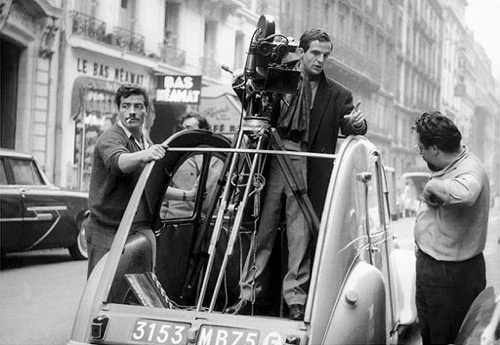
Breathless and New Wave as a whole inspires many work clearly, however this seemingly had a big affect on crime films, Biopics and any type of drama. As these genres would never become as realistic as they were without New Wave. One crime film likely that wouldn’t of been as close as a success would of been Brian De Palma’s 1983 Scarface that uses New Wave techniques such bringing era relevant topics such as Cuba refugees while the cinematography feels some what similar to the style, he also incorporates auteur theory into his work. It may of also had an influence on how Tony is left by his wife in the movie and that he he dies at the end while refusing to go down. Just like in the film where Patricia no longer wants to be involved and Michel dies when refusing to go to jail. It may of had influence on movie deaths such as in James Mangold’s Logan the impact of final words occur in both. Florian Henckel von Donnersmarck’s The Tourist plot may have been heavily inspired by Breathless, with a runaway criminal finding love. The biggest influence from this style is Quentin Tarrantino who clearly focuses less on story in all his movies and uses everything else in the movie to tell more of a plot. Can be seen in movies such as Kill Bill or The Hateful 8 where focus on story is less focused on and so makes it more unique to the class of directors Tarrantino is in. Pulp Fiction is another film by Tarrantino inspired by New Wave by having a very similar style while in both movies they use smoking scenes to create more character depth as they are similar to the interactions in Breathless. The hand hold technique of cameras changed cinema clearly though as likely inspired the hand held camera movement in films such as the Blair Witch Project and Cloverfield where they are filmed by handheld camera. This brought more realism and fear to the scenes in those films as they were so real as it mostly used what were around them in filming, and less CGI effects.

Strike
Strike is a 1925 Soviet silent film and directed by film pioneer Sergei Eisenstein who was releasing his first feature film. A unfinished project supposed to be in seven parts but was released as six smaller parts in one part of the uncompleted series. Sergei Eisenstein is famously the creator of film montage and his most famous being Battleship Potemkin. He would later learn other continents film techniques in later life but where he originally learned film was at the VGIK a film institute in Moscow founded in 1919 by Vladimir Gardin a year after the Bolshevik takeover of the Government and is the oldest film institute. At the time of release Vladimir Lenin had just died a year before and Stalin was starting to try to take power so there wasn’t any censorship on this piece of work. However the political views of the time still come through by still strong hate towards the Tsarist regime before 1917. This new regime led to the Soviet Fine Art movement what was either propaganda or way telling views during the civil war. Examples of this is before the Bolshevik takeover the Supremacist Composition 2 by Kazimir Malevich or after the civil war the book “Book in all branches of Knowledge” by Alexander Ronchencho.
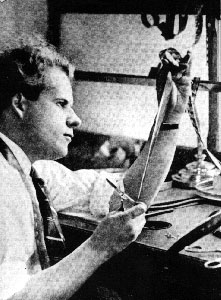
Intellectual method is used in both the beginning of the movie and end by linking people to animals. In the earlier scenes when showing the characters and connecting them to animals by showing it then the person copying traits as a way to show there nicknames. Its also used at the end where the cow being slaughtered is used to imply that all the people running are being executed. What Eisenstein gets from this affect is showing emotion, and character in a silent film. By giving examples of animals such as the cow it suggests to the audience the people are screaming in pain, without showing the faces or having to hear the screams. Tonal Editing method is used very interestingly in this movie by how at the beginning they used shadows and light to show the hard of the workers as well as showing the dark gritty environment they are in. The shadows in the scene is to show the Soviet audience at the time, the harsh realities of being under Tsar as its used as the shadow of the past. The over tonal that brings together metric editing, rhythmic montage and tonal editing method together c an be all seen in the actual strike through the pace of it as it adds drama to the scene, as well as the tone constant throughout to match the speed. While the lighting changes between the darkness behind the door and the brightness outside with all the workers. Sergei likely did this to imply to the audience outside is hope while inside working is doom. The transition in the movies are very smooth and well done between scenes as they Eisenstein uses montage techniques such as instruments to a moving group of people going up a hill. The pace of the whole movie as a whole can be seen as a way to bring the theme in patience to the core of the entire film as a whole.

Strike has inspired a lot of films through many different means, even it is small. One influence many would not notice is by the similarities in the opening between this films comparing people to animals and Sergio Leone’s The Good, the Bad, and the Ugly where he introduces the characters by the words. This scene clearly has inspired the latter by how comparable they are. Though the main clear inspiration from Strike is Rocky and The Karate Kid where John G. Avildsen has been inspired to create films that support certain themes from Strike while using certain Sergei Einstein techniques such as the montage scenes in both movies for training to create the emotion of succeeding and discovering potential. Collectivism is one of the main themes in this film and it likely inspired the genre, especially the Bruce Lee movie Fists of Fury where Lee’s character seeks both revenge and respect from a rival Japanese school who is trying to destroy his school, while insulting Chinese culture in the process. The ending with the slaughtering of the cow seems to be a direct influence to the ending of Apocalypse Now identical ending of the Slaughtering of the water buffalo. Ryan Coogler the director of Creed takes inspiration from montage while in Black Panther he uses the ideas of collectivism.
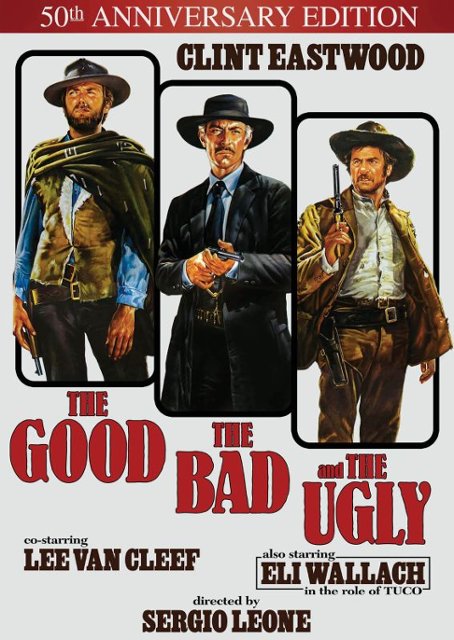

The Owl
Cabinet of Doctor Caligari
French new wave “Breathless”
French New Wave is a film movement which emerged in the 1950’s and 1960’s. It is a form of European art cinema, and is often referred to as one of the most influential movements in the history of cinema.
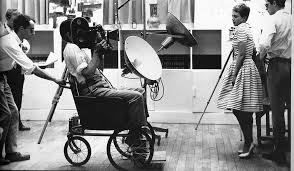
French new wave began due to a lack of studio funding and need for change by the directors, because of the low funding it forced directors such as Jean-Luc Godard to use more DIY techniques, for example, the car scenes weren’t on a sound stages but actually driving on a real road. It was the sense of effortlessness that gave French new wave its title, The chosen scenery was relatable to the audience as a lot of the films were shot in cities, the plots were realistic and more importantly believable. Also the characters In the films were cool, chilled and detached which turned them into icons for the audience, The characters were also considered fashion statements because of how they dressed and looked, we can see this in ‘Breathless” because Patricia had short hair and wore weightless striped shirts not to mention her ‘New York times’ shirt she wore when selling papers in the streets.

People argued that french cinema was similar to the literature, which expresses the same ideas that are shown in novels and paintings. The artists at that time used movies to voice their thoughts. Some of the leading film producers wanted to change it and this is the birth of the movement in the history of French cinema (French new wave). The movement wasn’t purely about cinema, it was about all art forms including art and music, cinema is an art form and it changed along side these other art forms.
“Cinema is not a craft it is an art” said Jean-Luc Godard
A few examples of french new wave films are:
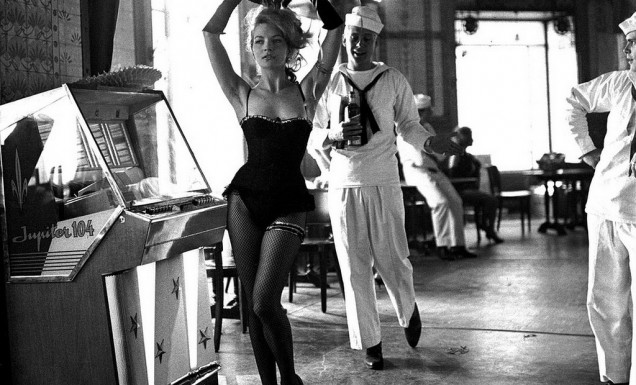 Lola (Jacques Demy) released in 1961
Lola (Jacques Demy) released in 1961
 Les Bonnes Femmes (Claude Chabrol) 1960
Les Bonnes Femmes (Claude Chabrol) 1960
 Shoot the piano player (François Truffaut) 1960
Shoot the piano player (François Truffaut) 1960
Editing and cinematography in breathless

Jean-Luc Godard used loads of jump cuts in a new and exciting way that provided the film with a lot of movement. “I remember very clearly — how I invented this famous way of cutting, that is now used in commercials: we took all the shots and systematically cut out whatever could be cut, while trying to maintain some rhythm.”

This photo shows how throughout the film Michel glanced over towards the camera almost breaking the fourth wall, But Godard played with the rules of traditional cinema to see what was possible, This glance gives the scene a more relaxed feel and allows the audience to empathise with the character more as though he were really speaking to us.
How French new wave influenced cinema
I often see similarities with French new wave when watching modern films but I see it mostly in the characters mannerisms and how they are presented to the audience. In 1962 James bonds ‘Dr. No’ was released and the character of James Bond is much like that of Michel because of his style and flare.
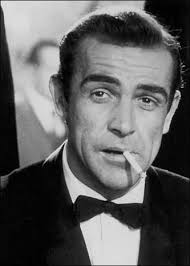
In 1981 Raiders of the lost ark (Steven Spielberg) was released and Indiana jones had the same sense of suave as Michel and James Bond.

We can also see just from this image how jones also glares into the camera just like Michel in ‘Breathless’.
The Cabinet of Dr Caligari
The Cabinet of Dr Caligari is a German 1920 silent horror movie released in 1920 directed by Robert Weine and is seen as a important film of expressionist cinema in Germany. This film was created and released in 1920 what was 2 years after the end of WW1 what meant the memories felt fresh what led to the expressionist art movement in Germany where work was considered bleak and depressing as a way to represent the condition of the country what had been suffering from crisis in the new Weimar Republic. The script was also inspired from writers Hans Janowitz and Carl Mayer own experiences with the military in WW1 who became pacifists. This film connects to these themes and events by bringing all of these together to create a final product what becomes a message from the director like all expressionist work what states look what war does. This film was produced by Decla-Bioscop AG a independent German film studio, what wasn’t apart of UFA what was the main studio in this period of time in Germany after it being founded in 1917. Erich Pommer was one the producers on the film, who was seen at that point as one of most powerful people in film in Germany and Europe. He was also apart the silent German expressionist movement era in film. The props and sets took 2 weeks to finish and were designed by Herman Warm, Walter Reimann, Walter Rohrig. They used many different eras of history in their work, this was done to show the importance of film design to German film in the 1920s.
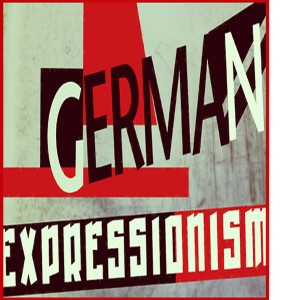
Weine’s work is innovative by how he captures horror throughout the film by creating unease through visuals and unpredictability through its plot. The stage in all scenes use backgrounds what both makes the setting seem bigger but however this effect also adds to this horror genre as it gives a sense of claustrophobia through unease. This gives the style of the setting a unique factor what gives the movie the factor of horror across the whole movie. Also using paint as shadows to cut cost was very helpful in creating a more unusual setting by having a more equal amount in contrast in black and white scenery, this especially used well in the kidnap scene where its the room is pretty much covered in shadow except for the area surrounding the window. By also making the deign of the set more rigid and diagonal it makes it more of a horror movie by making the audience feel unease, as it really limits at the same time as making you not want to be apart of the world. Costume and make-up also builds Cesare as horror figure by making him look unlike everyone by making him seem like he is dead, by doing that it follows certain themes that impact the twist at the end even more. The best scene in the movie where Cesare is seen as a horror figure is when he climbs the building with damsel in distress what encapsulates all feelings the antagonist in horror movie has in these movies. Cinematography is used with the stage well as it keeps as little space as possible as Weine seems to do it purposely to keep that claustrophobic feeling to the whole movie. He is uses the closing of an eye as a camera effect well to indicate the end of the scene and when cutting to the next, as it again follows the idea this is a dream. It also creates emotion quite well when showing the shock and sadness when one of victims family finds them dead. It gives so much through the iris closing right on the shocked members face, focusing on lots of different emotions all at once. In almost all shots of the film he covers part of the side of the camera to firstly to limit even more space but to make it seem the environment is fading, to make it look it more like a nightmare by keeping it as dark as possible. As its black and white and silent the composition as well as aspect ratio makes it seem more of a horror as everything is so dark while its missing the sound what adds a certain predictability to films what helps it massively, as you can’t predict anything first time after viewing.

Robert Weine legacy has run through cinema with his style especially being lasting effect. The most obvious inspiration from this is Tim Burton who creates films very similar to Weine with a Gothic twist to all is movies what is that it creates unease even if it is not supposed to be a horror or thriller with examples of this being Batman( a superhero movie) and Planet of the Apes( a sci-fi film). It is clear that there is inspiration in visuals and dark themes in both directors work. Burton even took it further in Edward Scissorhands and Dark Shadows by making Johnny Depp’s characters look nearly identical to Cesare. This likely led to other directors making Depp look like Cesare by making him look dead in the eyes such as in the Pirates franchise. Weine has also had an obvious effect on horror movie settings and locations, as in this film mostly due to small studios but uses the small space in the screen to create that claustrophobic and enclosed environment in film that makes scenes more intense and dramatic as their is less space for the cast in the space what further limits what can happen in a scene. It can also be seen in the neo-nor film Blade Runner what uses claustrophobic environments to show its theme of over population. One more aspect Cesare’s character was the theme of death and the film the Crow seems to be partly pay homage to Weine’s character as Brandon Lee’s Crow is an obvious copy of Cesare in look and what he represents what follows the expressionist genre quite strongly. Something what might not be easily picked up but the twist at the end likely inspired M. Night Shyamalan who is famous for twist endings and lots of other directors who use twists for endings. One last inspiration what likely came from this film what has become some sort of a cliche in film is the evil scientist being the main antagonist of the film. This probably helped make Dr. Frankenstein become more of a villain than a tragic character like the books, and this has been replicated ever since, such as in Alien 3.


